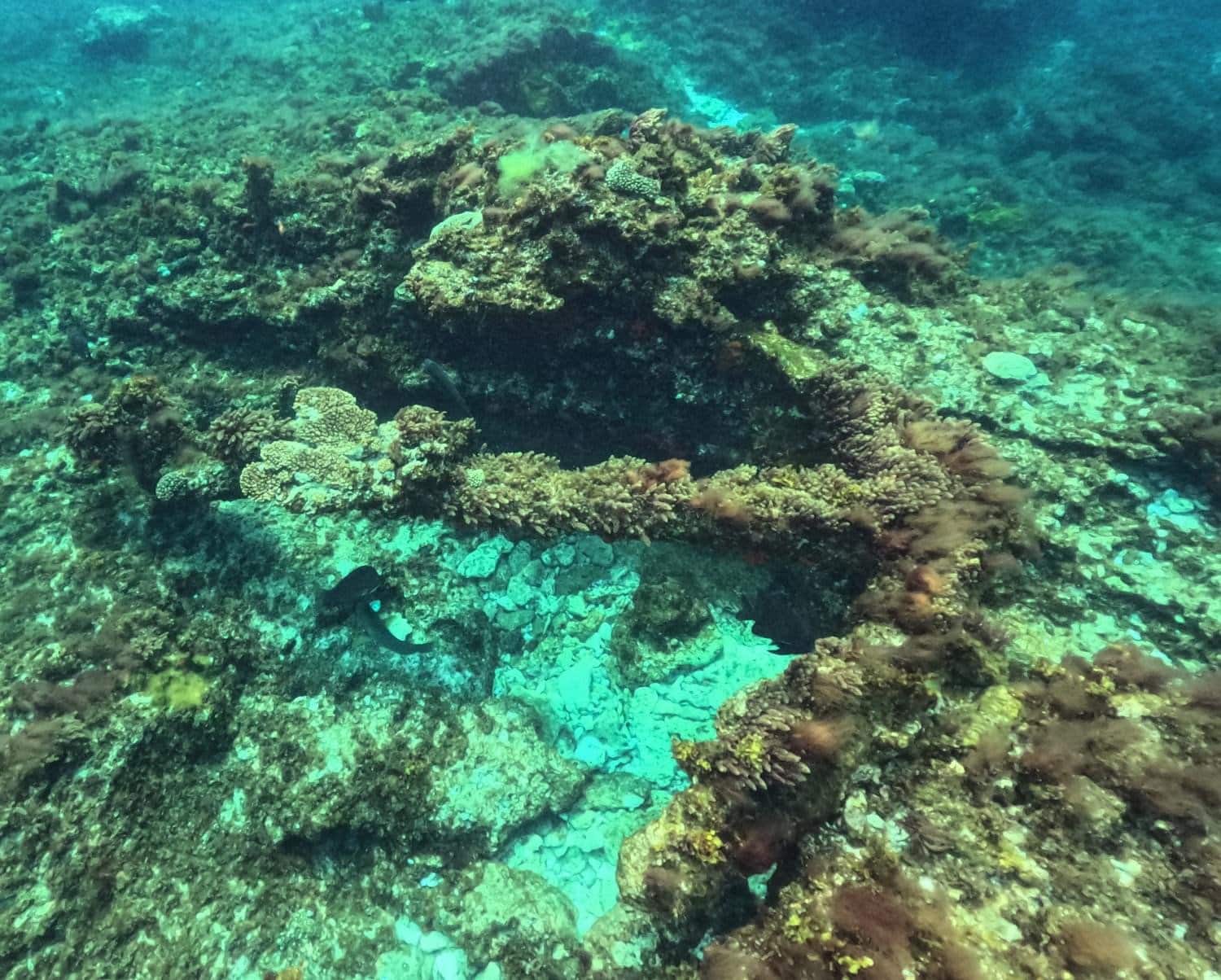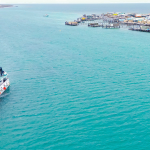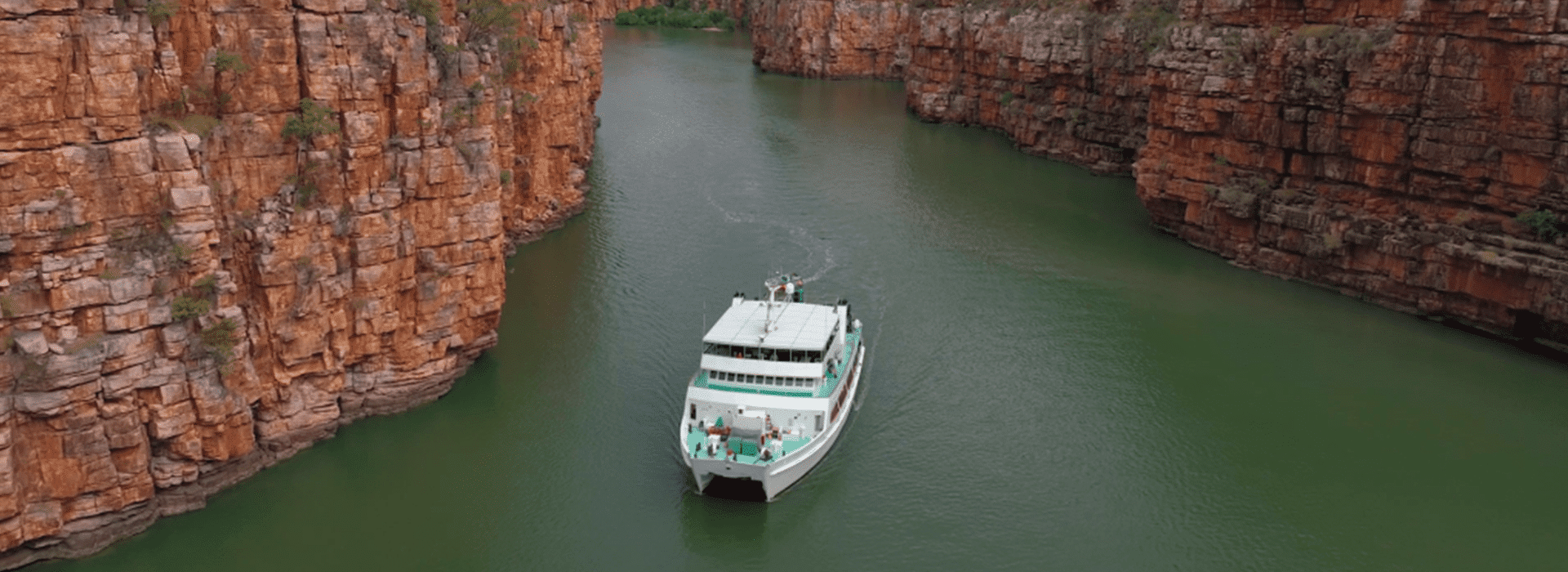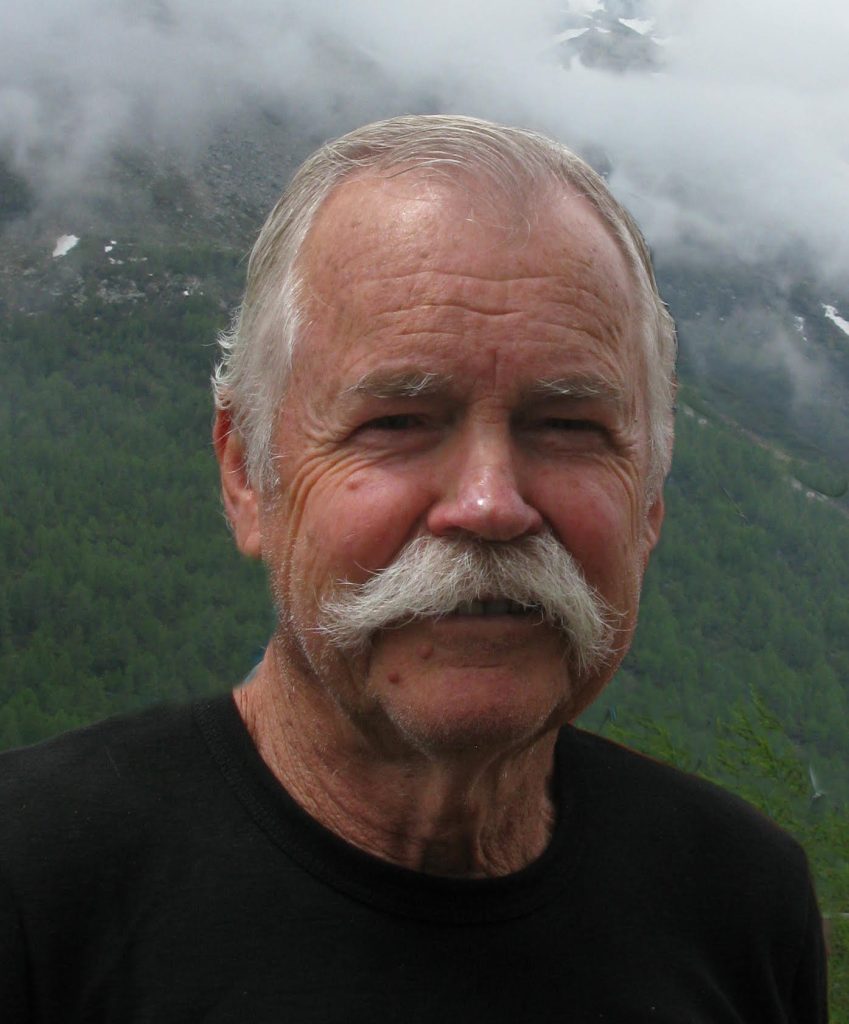We are delighted to announce the addition of Graeme Henderson to the Shipwrecks and Wonders Guest Speaker Team. Graeme is an acclaimed maritime historian, archaeologist, and former museum director whose groundbreaking work has been instrumental in shaping the field of maritime archaeology in Australia.
At just 16, Graeme discovered the wreck of the Vergulde Draeck (Gilt Dragon), a Dutch East India Company ship lost in 1656. This discovery not only brought global attention to Australia’s underwater cultural heritage but also led to the establishment of the Western Australian Maritime Museum and the enactment of protective legislation for historic shipwrecks.
Graeme’s extensive research includes significant work on the Batavia wreck (1629), one of the most infamous shipwrecks in history, which occurred at the Abrolhos Islands and is remembered for its harrowing tale of survival and mutiny. His expertise on the Batavia and other shipwrecks at the Abrolhos offers a unique and insightful perspective into the region’s rich maritime history.

Graeme has also contributed to the discovery and preservation of numerous other shipwrecks, including HMS Sirius and HMS Pandora. His advocacy for underwater cultural heritage has driven preservation efforts at national and international levels, including his critical role in drafting UNESCO’s 2001 Convention on the Protection of the Underwater Cultural Heritage.
As a part of the Shipwrecks and Wonders Guest Speaker Team, Graeme’s wealth of experience and captivating storytelling will enhance your exploration of the Abrolhos Islands. His deep knowledge of the region’s shipwrecks and his passion for maritime history promise to bring the tales of the Batavia and other legendary shipwrecks to life. We look forward to the insights and inspiration he will share as we delve into the wonders of the Abrolhos Islands together.
🚢 Don’t Miss This Unprecedented Abrolhos Islands Adventure! 🗓️ Feb 19th, 2025
Join us aboard the Eco Abrolhos for an extraordinary 5-day cruise like no other! This special voyage features not one but TWO of Australia’s leading maritime experts—Dr. Howard Gray and Graeme Henderson—together for the first time.
Dive into the rich history of the Abrolhos Islands as these acclaimed speakers bring to life the gripping tales of the Batavia, Zeewijk, and other legendary shipwrecks. From daring exploration to survival against the odds, their captivating stories will transport you back in time.
🌊 A Rare Opportunity: Experience the perfect blend of history, stunning natural beauty, and world-class hospitality. Whether you’re a maritime enthusiast, history buff, or nature lover, this cruise promises a truly unforgettable journey.
🚨 Spots are Limited: This exclusive event is not to be missed—secure your place today!
✨ February 19th, 2025. A date to remember. An adventure of a lifetime.
Graeme Henderson Curriculum Vitae
Graeme Henderson, (AM, Citwa, BA, DipEd, MA, DipPSMgt) is an Australian maritime historian, archaeologist, and previous museum director, born in Subiaco in 1947. His discovery of the 1656 wreck of the Dutch East India Company (VOC) ship Vergulde Draeck and his passing of ‘finder’s rights’ to the Western Australian Museum, was the catalyst both for the enactment of the world’s first protective legislation for post-medieval ‘historic wrecks’, and for the creation of the Western Australian Maritime Museum. Joining the Museum’s staff, he established the ‘colonial wrecks’ program, subsequently becoming the first Director of two major facilities in Fremantle: the Western Australian Shipwrecks Museum and the Western Australian Maritime Museum. Both venues have achieved world class exhibition and research facilities relating to maritime archaeology and history. In the face of destructive underwater activities on shipwrecks, he advocated successfully for protective legislation at state, national and international levels. He has researched and written about the maritime history of Western Australia for over fifty years.
Early life – finding the Vergulde Draeck and its aftermath
On Easter Sunday, 1963, during a spearfishing trip on his father’s runabout, Graeme, at the age of 16, found the shipwreck Vergulde Draeck, colloquially known as Gilt Dragon. He saw ballast bricks, elephant tusks, anchors and cannon, and he called together his father James, brother Alan and dive mate John Cowen, the other divers in the water. Flourishing a brick he had retreived, he led them back to the wreck. A fifth diver who had remained on the boat, Alan Robinson, was then shown the site.
Sharp differences emerged within this group when chests of silver coins were found – was the wreck a treasure trove to be plundered or a national cultural treasure to be preserved? Together with James, Alan and John, he persuaded the WA Museum to become responsible for historic shipwrecks in 1963, with a Crown Law Department Deed of Assignment, transferring his finder’s rights to the Museum.
As Zuytdorp wreck researcher Phillip Playford put it in 1996, ‘That assignment marked the beginning of the museum’s involvement in wreck investigations, which led eventually to establishment of the WA Maritime Museum.’ Just eleven months after accepting the gift of rights with its bestowed entitlement, the Museum was able to have the State Government enact the Museum Act Amendment Act, listing as protected ‘historic wrecks’; the English Trial of 1622, and the VOC ships Batavia of 1629, Vergulde Draeck, of 1656, Zuytdorp of 1712 and Zeewijk of 1727. This initiated in Australia the field of study described as ‘maritime archaeology’, more recently termed ‘underwater cultural heritage’.
Maritime archaeology in Western Australia
While serving as a curator in the WA Museum’s shipwreck unit, Graeme developed public awareness of Western Australia’s 19th century shipwrecks and its maritime history. During vocational and recreational activity he discovered (with diving mates) the wrecks of the sealer Belinda (1824), trader Lancier (1839), and dredge Fremantle (1936) in State waters. As head of Colonial Shipwrecks in the Maritime Archaeology Department, he led expeditions to wrecks of the English whaler Lively (c1806) on the Rowley Shoals, the American China-trader Rapid (1811) at Ningaloo, the trader Elizabeth (1839) at Cottesloe, the ex-slaver James Matthews (1841) in Cockburn Sound, and the emigrant barque Eglinton (1852) off the coast north of Fremantle.
Maritime archaeology in the Eastern States
Graeme developed public awareness of the historical and archaeological value of 18th century shipwrecks off other Australian states, playing the lead role in expeditions to the wrecks of HMS Sirius (1790) at Norfolk Island, HMS Pandora (1791) off Queensland, and the Sydney Cove (1799) in Bass Strait. The Sirius wreck expeditions led to the development of Australia’s most comprehensive First Fleet archaeological collection and to the creation of the HMS Sirius Museum on Norfolk Island. The work conducted during the Pandora and Sydney Cove shipwreck expeditions resulted in exhibitions at the Museum of Tropical Queensland, in Townsville, and the Queen Victoria Museum and Art Gallery in Tasmania.
Role in developing the WA Shipwrecks Museum
In recognising the need for a venue suitable for permanent bulky shipwreck exhibitions, collection storage, research staff and laboratories Graeme and colleague Ian Crawford sought a suitable venue in a prime oceanfront location. The State Government acted upon Graeme’s recommendation that the WA Museum acquire and redevelop the defunct convict period Commissariat Building in the West End of Fremantle for the State’s Shipwreck Archaeology collection. This also made it possible, and most appropriate, for the timbers from the 1629 Batavia wreck to be raised, preserved and reassembled for public exhibition.
Role in developing and directing the WA Maritime Museum Graeme developed the Maritime Museum’s historic boats collection and recruited the staff to build up and curate one of Australia’s most comprehensive historic watercraft collections. He also developed a vision for a Maritime History Museum to accompany the Shipwrecks Museum. As Project Director, he developed with his staff aspirations and plans for the world class WA Maritime Museum facility on Victoria Quay, Fremantle/Walyalup. He lobbied successfully to have Australia’s most famous yacht, the Americas Cup winning Australia II, brought back from Sydney to Fremantle, and he used its presence in lobbying for the construction of the new exhibition facility on Victoria Quay. He was influential in bringing National Centre of Excellence status and funding to the Western Australian Maritime Museum for its work on shipwrecks. He arranged a partnership between the Museum and the Duyfken 1606 Replica Foundation for constructing, on the forecourt of the Shipwrecks Museum, the replica of the first European vessel to reach Australia. At a meeting in London in 2002 he challenged marine scientist and explorer David Mearns to come to Western Australia to find the wreck of HMS Sydney, as acknowledged in Mearns’ book The Search for the Sydney: how Australia’s greatest maritime mystery was solved. By then the new Museum had achieved an international renown. He escorted VIPs through the Maritime Museum, including HRH Prince Phillip of England, HRH Prince (now King) Charles of England, Hassanal Bolkiah Sultan of Brunei, HRH Willem-Alexander Prince of Orange, and Gough Whitlam, 21st Prime Minister of Australia.
Role in Policy Development
Graeme led a UNESCO Mission to the Pharos Lighthouse, one of the seven wonders of the ancient world, at Alexandria, Egypt, and recommended the development of an underwater museum. UNESCO subsequently announced in 2008 that it would help Egypt to build its underwater museum. As the founding Chairman of the International Committee on the Underwater Cultural Heritage he played a crucial role in initiating development of the draft for the UNESCO 2001 Convention on the Protection of the Underwater Cultural Heritage.
Ongoing research, wreck search and policy development
Graeme was a member of the Steering Committee who came together in May 1978 to establish the Australian Association for Maritime History. Today, he is the founding Chairman of Wreck Check Inc., a group whose objects are to search for, locate, and document underwater cultural heritage.
Book Publications
- Henderson, Graeme, (1973), The Wreck of the Elizabeth, Studies in Historical Archaeology Number One, Australian Society for Historical Archaeology, University of Sydney, ISBN 0-909797-01-3.
- Henderson, Graeme (1980), Unfinished Voyages: Western Australian Shipwrecks, 1622-1850, University of Western Australia Press, ISBN 0-85564-176-2.
- Henderson, Graeme (1986), Maritime Archaeology in Australia, University of Western Australia Press, ISBN-0-85564-241-6.
- Frank Broeze; Graeme Henderson, Western Australians and the Sea: Our Maritime Heritage, (1986), Western Australian Museum ISBN-0-7309-1244-2.
- Henderson, Graeme; Henderson, Kandy (1988), Unfinished Voyages: Western Australian Shipwrecks 1851-1880, University of Western Australia Press, ISBN 0-85564-282-3.
- —; Stanbury, Myra (1988), The Sirius Past and Present, Collins Australia, ISBN-0-7322-2447-0.
- Cairns, Lynne; Henderson, Graeme (1995), Unfinished Voyages: Western Australian Shipwrecks 1881-1900, University of Western Australia Press, ISBN 1-875560-24-6.
- Henderson, Graeme (2007), Unfinished voyages : Western Australian shipwrecks, 1622-1850 (2nd ed.), UWA Press, ISBN978-1-920694-88-3
- —; (2009), Redemption of a slave ship : the James Matthews, Western Australia Museum, ISBN978-1-920843-99-1
- —; National Library of Australia, (issuing body.); Western Australian Museum, (issuing body.) (2016),Swallowed by the sea : the story of Australia’s shipwrecks, NLA Publishing ; Perth, WA : Western Australian Museum, ISBN 978-0-642-27894-4
- —; de Hoop, Robert; Viduka, Andrew, (2022), Misadventures in Nature’s Paradise: Australia’s Cocos (Keeling) Islands and Christmas Island during the Dutch era, UWA Publishing, ISBN: 978-1-76080-233-2.
Awards
- 2012: Member of the Order of Australia (AM).
- 2008: Shortlisted for Premiers Book Award for the book Unfinished Voyages.
- 2003: Centenary Medal, Commonwealth of Australia, ‘For service to the community of Western Australia through the WA Maritime Museum’. (see attached John Howard, PM Canberra, to Graeme Henderson 9 April 2003)
- 2002: Western Australian Citizen of the Year (Cit.WA): Arts, Culture, Entertainment. ‘In recognition of the Achievement and Contribution to the State and People of Western Australia’(2002 – Western Australian of the Year Awards Hall of Fame (celebratewa.com.au)
- 2002: ‘50 Most Inspirational Western Australians’ list (Scoop Magazine winter 2002)
- 1996: State Government Award as sole Principal Discoverer and ‘primary discoverer’, Gilt Dragon (1656) shipwreck. (Maritime Archaeology Amendment Act 1997 – [00-00-00].pdf (legislation.wa.gov.au)
- 1988: Australian Heritage Award, Individual Category (National Trust of Australia).
- 1976: Literature Board (Australia Council) Writers Special Purposes Grant
- 1964: Royal Western Australian Historical Society Schools Essay Prize. (Henderson, G. 1963. Diving on the Gilt Dragon. Scimitar [Applecross High School magazine], 32-33).



